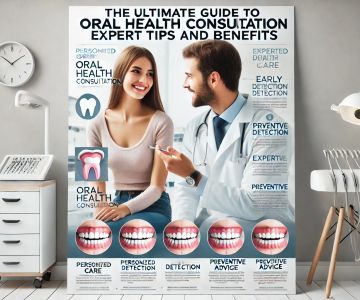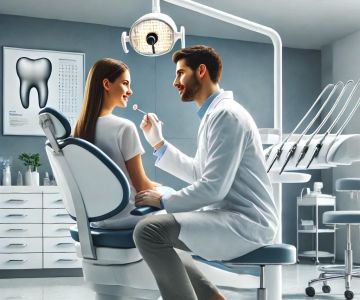Understanding Oral STDs and the Importance of Testing
As awareness of sexually transmitted diseases (STDs) grows, people are becoming more conscious of their oral health and the risks associated with oral sex. Many may wonder, “How do doctors check for oral STDs?” The truth is, oral STDs can be as concerning as genital ones, and early detection is crucial for preventing complications. This article will provide you with a comprehensive overview of how oral STDs are diagnosed, the common symptoms to look for, and the importance of seeking medical advice if you suspect an infection.
What Are Oral STDs?
Oral STDs are infections transmitted through oral sex, affecting the mouth, throat, and sometimes even the lips. Common oral STDs include herpes, gonorrhea, chlamydia, syphilis, and human papillomavirus (HPV). These infections can lead to uncomfortable symptoms, such as sores, blisters, and swelling, but many people do not show any symptoms at all, which is why regular testing is vital.
Common Symptoms of Oral STDs
If you are experiencing unusual symptoms after engaging in oral sex, it is essential to get checked for oral STDs. Some common symptoms to watch for include:
- Blisters or sores around the lips or inside the mouth
- Painful swallowing or sore throat
- Redness, swelling, or irritation in the mouth
- Unexplained pain or discomfort in the mouth or gums
- Fever or flu-like symptoms
Not all oral STDs present with obvious signs, which is why it is important to get tested even if you do not experience symptoms.
How Do Doctors Check for Oral STDs?
Now, let’s dive into the testing process. If you suspect you may have contracted an oral STD, it is crucial to consult a healthcare professional. Here is an overview of how doctors typically check for oral STDs:
1. Physical Examination
During a visit to your doctor or dentist, a physical examination of the mouth, throat, and lips is usually the first step. Your doctor will look for visible signs such as sores, blisters, or unusual swelling. This is particularly important for diagnosing conditions like oral herpes or syphilis, where symptoms are often visible.
2. Swab Test
If any visible sores or lesions are found, your doctor will likely perform a swab test. In this procedure, a cotton swab is used to collect a sample from the lesion. The sample is then sent to a laboratory to be tested for viral or bacterial infections. A swab test is an effective way to diagnose infections like herpes and gonorrhea.
3. Throat Culture
In some cases, a throat culture may be necessary. This test involves scraping the back of the throat with a swab to check for the presence of STDs such as gonorrhea or chlamydia. It is an essential tool for diagnosing infections that do not have visible symptoms but may be causing throat pain or discomfort.
4. Blood Tests
While blood tests are not typically used for diagnosing oral STDs directly, they can help detect certain infections like syphilis or HIV, which may also be transmitted through oral sex. A blood test is often used if there is suspicion of a more widespread infection or if the doctor wants to confirm a diagnosis.
Why Early Detection is Crucial
Oral STDs may seem less concerning compared to other forms of STDs, but they can still lead to significant health issues if left untreated. For instance, untreated herpes can cause recurrent outbreaks, while untreated syphilis can lead to long-term health problems, including organ damage. Additionally, some oral STDs, like HPV, are linked to an increased risk of oral cancer.
Early detection through regular checkups ensures that you can begin treatment sooner, minimizing discomfort and reducing the risk of spreading the infection to others. Many oral STDs are treatable with medication, but only if diagnosed early.
Preventing Oral STDs
Prevention is always better than cure, and there are several steps you can take to reduce your risk of contracting an oral STD:
- Use protection during oral sex, such as dental dams or condoms
- Engage in open conversations with your partners about sexual health
- Get vaccinated for HPV to protect against strains that can cause oral cancer
- Practice good oral hygiene to maintain overall mouth health
Regular screenings for STDs, including oral ones, should be part of your routine healthcare, especially if you are sexually active. If you have concerns or suspect an infection, visiting your doctor or dentist is the best way to ensure your oral health is maintained.
Conclusion
Oral STDs are a real concern for anyone engaging in oral sex, and it’s crucial to stay informed about how they are diagnosed and treated. With physical exams, swab tests, and throat cultures, doctors can easily identify most oral STDs, even those that do not present obvious symptoms. Taking the necessary steps to prevent, identify, and treat these infections will help protect both your health and the health of those around you.





 Westgate Dental Arts
Westgate Dental Arts Coventry Family Dental
Coventry Family Dental Familia Dental
Familia Dental Dr. Daniel S. Fife, DDS
Dr. Daniel S. Fife, DDS Dentistry At Suburban Square: Michael I. Wollock, DMD
Dentistry At Suburban Square: Michael I. Wollock, DMD Comfort Care Dental
Comfort Care Dental The Importance of Oral Health Education During Pregnancy for a Healthy Pregnancy
The Importance of Oral Health Education During Pregnancy for a Healthy Pregnancy Why Skipping Dental Checkups Can Lead to Bigger Oral Health Problems
Why Skipping Dental Checkups Can Lead to Bigger Oral Health Problems Advantages of Porcelain Dental Restorations
Advantages of Porcelain Dental Restorations Best Tips for Brushing Your Teeth Properly for Healthy Gums: Essential Techniques for Oral Health
Best Tips for Brushing Your Teeth Properly for Healthy Gums: Essential Techniques for Oral Health How Can Diabetes Cause Tooth and Gum Problems? Preventing and Managing Oral Health Issues
How Can Diabetes Cause Tooth and Gum Problems? Preventing and Managing Oral Health Issues Healthy Habits for Promoting Good Oral Health and Hygiene: Tips for a Healthy Smile
Healthy Habits for Promoting Good Oral Health and Hygiene: Tips for a Healthy Smile